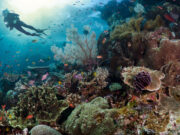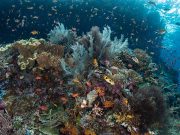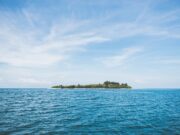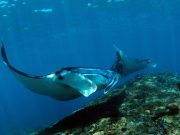Whether you’re a new or seasoned diver, there is something irresistible about the ocean’s deep dive sites. There you will find big pelagics, elusive sharks, pristine wrecks and breath-taking walls that fall into the abyss. With deep dives for every experience level, you can start planning your next adventure today. Get started with our round-up of the world’s best deep dives.
1. SS THISTLEGORM, EGYPT
As if the beautiful reefs weren’t reason enough to go diving in Egypt, the wrecks are outstanding. Scuba diving the world-famous SS Thistlegorm is on every diver’s bucket list and offers easy exterior and wreck penetration diving. The wreck is in fantastic condition and the ship’s cargo is still mostly intact, with vehicles and ammunition inside. It is the perfect introduction to deep wreck diving, in warm blue waters teeming with classic Red Sea marine life.
Maximum depth: 30m
Suitable for: All divers.
When to go: All year.

2. THE GREAT BLUE HOLE, BELIZE
Belize’s Great Blue Hole sits just off Lighthouse Reef and is an iconic deep dive that is regularly rated as one of the top dive experiences in the world. This enormous sinkhole is over 300 meters wide and plunges down to around 125 meters deep.
This seemingly bottomless dive site has a coral-covered shelf at the surface which rapidly changes into a landscape of stalactites and overhangs. There is a noticeable thermocline where the visibility reaches 60 meters, deep caverns and a healthy population of reef sharks in the depths.
Maximum depth: 40m
Suitable for: Advanced and experienced divers.
When to go: April to June is the best season for diving in Belize, though diving is possible all year.
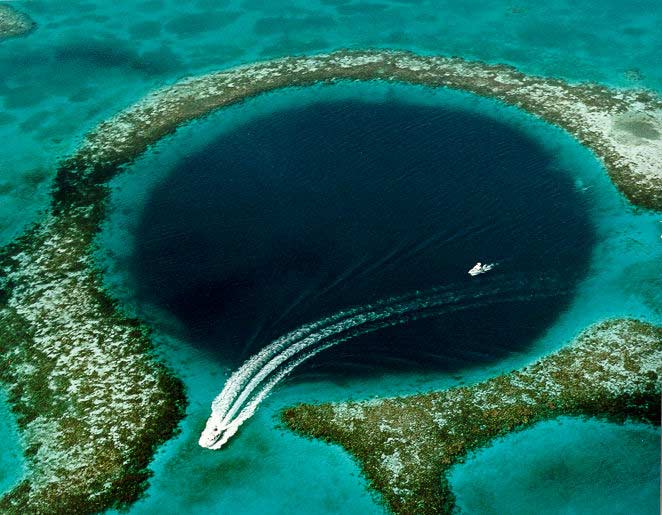
3. BIG BROTHER EAST, EGYPT
The Brothers Islands are a must-dive for anyone visiting Egypt who loves sharks. The waters are teeming with vibrant reef fish and host numerous sharks, including oceanic whitetips, grey reef sharks, thresher sharks and hammerheads. Big Brother East is a classic deep dive, where magnificent blue waters frame the thriving coral reefs, deep drop-offs and marine life of the area perfectly.
Maximum depth: 40m
Suitable for: Experienced divers.
When to go: May to June for hammerheads, though thresher sharks are more frequently seen at the islands during the winter months.
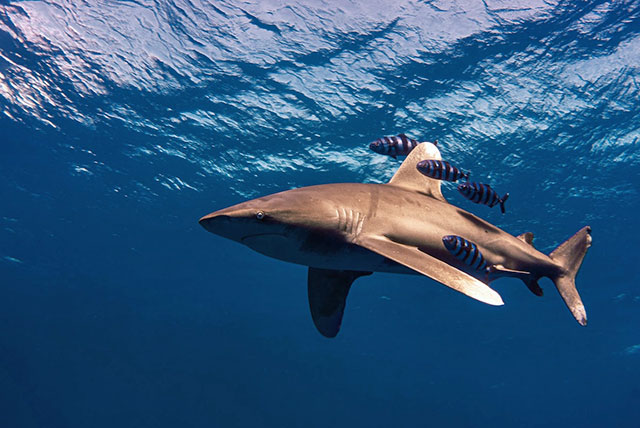
4. MV CAPTAIN KEITH TIBBETTS, THE CAYMAN ISLANDS
This spectacular wreck lies on the northwest side of Cayman Brac and is one of the Cayman Island’s best-loved wrecks. A huge 100 meters long, this Koni II class Russian Missile Frigate was sunk in 1996 as an artificial reef and is the only diveable soviet wreck in the Western hemisphere. She sits in clear blue waters and is a great multi-level deep dive with plenty of rooms to explore.
Maximum depth: 25m
Suitable for: Experienced divers.
When to go: You can dive the Cayman Islands year-round, but the hurricane season runs from June to the end of November.
5. GORDON ROCKS, THE GALAPAGOS ISLANDS
The UNESCO-listed Galapagos Islands are a paradise for any underwater naturalist and keen scuba diver. With so many incredible dive sites, it’s hard to pick a favourite, but Gordon Rocks is one of them. Near to Santa Cruz Island, Gordon Rocks (also known as the Washing Machine) is busy with hammerhead sharks and sunfish. You can also find whitetip reef sharks, Galapagos sharks, stingrays, eagle rays, mobula rays and a diverse array of fish at this special deep dive site. It is one of many highlights of a Galapagos diving trip.
Maximum depth: 30m
Suitable for: Advanced and experienced divers.
When to go: January to May for hammerheads and mantas. June to December for whale sharks, and July to September for sunfish.
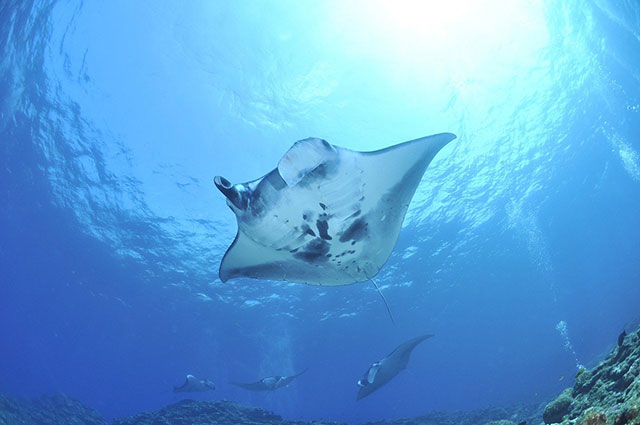
6. ELPHINSTONE, EGYPT
Steep drop-offs that descend thousands of meters and strong currents that attract big pelagics are typical of diving at Elphinstone. This popular dive destination lies just 30 km from Marsa Alam and is all about steep walls, thrilling dives and abundant sharks, including hammerheads, oceanic whitetips and reef sharks. The Southern Plateau is one of the best deep dives at Elphinstone, where you have a great chance of seeing oceanic whitetip sharks.
Maximum depth: 40m
Suitable for: Experienced divers.
When to go: October to December for oceanic whitetip sharks, May to August for mantas.

7. TRUK LAGOON, FEDERATED STATES OF MICRONESIA
Made up of more than 2000 forest-draped islands scattered across the western Pacific Ocean, the Federated States of Micronesia is frankly idyllic. This incredible dive destination is a wreck diving mecca and has a variety of deep dives.
Truk Lagoon, an old Japanese naval base in WWII, has numerous wrecks including around 15 wrecks at 40 to 60 meters deep. The wrecks are absolutely covered in bright corals and surrounded by schooling fish. The famous deeper dives at Truk include the San Francisco Maru and Katsuragisan Maru, which offer excellent tech diving opportunities.
Maximum depth: 30 – 60m depending on the dive site.
Suitable for: Advanced and experienced divers.
When to go: All year, though December to April is the dry season.
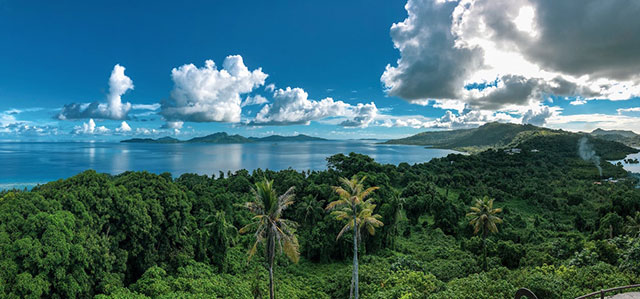
8. MONAD SHOAL, THE PHILIPPINES
Monad Shoal is famous for being the only place in the world where you can reliably encounter thresher sharks. These elusive and shy sharks are generally hard to find but they are seen almost daily at Monad Shoal’s cleaning stations, especially around dawn. A dive with these beautiful sharks is a perfect start to any day.
Since Monad Shoal is a submerged island sitting on top of a steep drop-off, which plunges down to 200 meters, it also attracts sharks, mantas, devil rays and more to its cleaning stations. All of which you can see whilst diving there.
Maximum depth: 28m.
Suitable for: Advanced and experienced divers.
When to go: All year.

9. SS YONGALA, AUSTRALIA
Sitting in the Great Barrier Reef, the SS Yongala is considered one of the world’s best wreck dives. This ship sank in 1911 and is in great condition, thanks to being fully protected by the Historic Shipwrecks Act. Lying at around 28 meters and an impressive 109 meters long, the SS Yongala is a huge artificial reef with colourful corals and sponges, fish life, sea snakes, bull rays and even passing bull sharks.
Maximum depth: 28m.
Suitable for: Advanced and experienced divers.
When to go: June to August for peak visibility.

10. FARUKOLHU EAST, THE MALDIVES
The Southern Atolls are a real hidden gem of Maldives scuba diving and have some of the deepest dive sites in the entire country and few divers. Nicknamed the Galapagos of the Maldives, Fuvahmulah Atoll is the jewel of this southern region. There you will find Farukolhu East dive site, a long deep wall that has strong currents and plenty of sought-after pelagics. Dive there and you have a good chance of seeing tiger sharks, sunfish, manta rays and hammerhead sharks.
Maximum depth: 33m.
Suitable for: Experienced divers.
When to go: December to March for calm seas, sunshine and the best water visibility.

11. DAHAB BLUE HOLE, EGYPT
Dahab is the most iconic tech diving destination in the world thanks to having the famous Blue Hole dive site. This natural blue hole has an arch that connects it to the Red Sea, starting at around 55 meters deep and plummeting beyond the reef wall to over 1000 meters. There are various deep dive options at this famous dive site, including the Canyon, a natural deep crack in the reef, and Neptune’s Chair at 70 to 80 meters deep.
Maximum depth: 28 – 80m and beyond, depending on the dive site.
Suitable for: Experienced divers.
When to go: All year.
12. VERDE ISLAND DROP OFF, THE PHILIPPINES
If you love exhilarating current dives and want to surround yourself with marine life large and small, go diving at Verde Island in Puerto Galera. The island’s waters plunge down to over 60 meters, and it is considered the most biodiverse area in the entire Coral Triangle.
Hosting 3 species of sea turtle, countless reef and pelagic fish, plus rays and prized macro critters, Verde Island is a paradise for underwater photographers. The Drop Off’s coral gardens are full of life and surrounded by shoals of fish, making it one of the best dives in the area.
Maximum depth: 30m.
Suitable for: Advanced and experienced divers.
When to go: All year, though April to September is the best time to dive there.
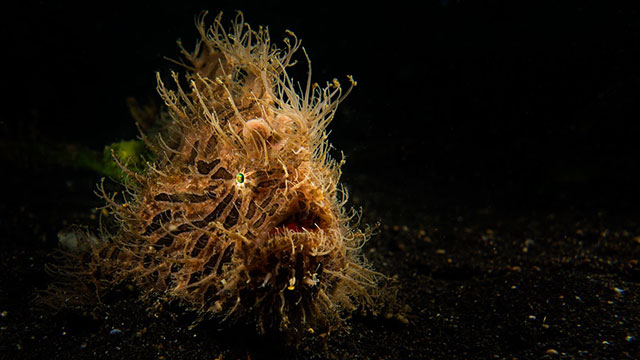
13. TIPUTA PASS, FRENCH POLYNESIA
The atolls of French Polynesia offer thrilling drift dives with numerous sharks and mantas, plus encounters with humpback whales and fasmouly-friendly stingrays. Rangiroa’s Tiputa Pass is washed by strong currents and is an exciting deep dive among schooling grey reef sharks, mantas, Napoleon wrasse and abundant reef fish. Bottlenose dolphins hang out at the channel entrance, and you can even see tiger sharks there. It is simply one of the best dives imaginable.
Maximum depth: 40m.
Suitable for: Experienced divers.
When to go: All year, though June to October is humpback whale season.

14. BLOODY BAY WALL, CAYMAN ISLANDS
Bloody Bay Wall is a breath-taking drop-off in the Caribbean and has a sheer vertical wall that descends over 900 meters into the inky depths. The wall is encrusted with corals, sponges and sea fans and hosts numerous macro critters. It is also visited by eagle rays, turtles and Nassau groupers.
Framed by water visibility up to 45 meters, it is understandably one of the most photographed dive spots in the world. With over 12 dives sites to choose from, Bloody Bay Wall has more than enough deep dives to keep any diver entertained.
Maximum depth: >45m.
Suitable for: Advanced and experienced divers.
When to go: You can dive the Cayman Islands year-round, but the hurricane season runs from June to the end of November.
Kathryn Curzon, a shark conservationist and dive travel writer for Scuba Schools International (SSI), wrote this article.






